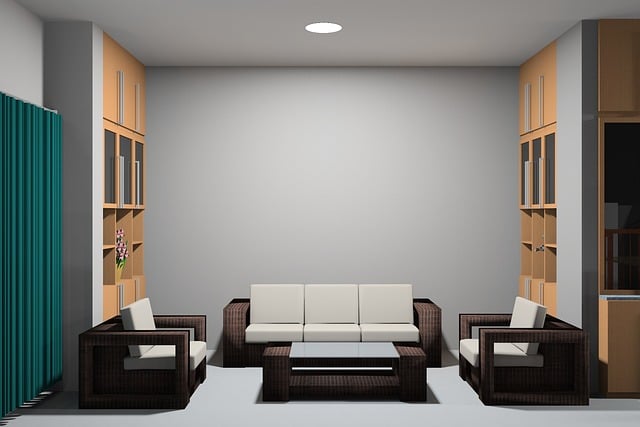3D modeling revolutionizes high-rise framing solutions, enhancing structural integrity and design visualization. Advanced software like AutoCAD and Revit enables precise digital replicas of columns, beams, walls, and floor systems, optimizing material usage and fostering aesthetically pleasing spaces. This technology aids in early issue identification, improves communication, reduces construction errors, and ultimately boosts project success while bridging concept to realization. However, complex modeling can extend timelines and require specialized tools for data management and interoperability challenges.
In the realm of construction, accurate visualization of high-rise structures’ framing components is paramount for successful project execution. This article explores innovative approaches using 3D modeling as a game changer in the industry. We delve into understanding the intricate framing elements of high-rise buildings and how 3D technology enhances visualization accuracy. Discover techniques to create detailed framing models, along with the benefits and challenges of implementing these cutting-edge high-rise framing solutions.
Understanding Framing Components in High-Rise Structures
In the realm of high-rise construction, understanding framing components is paramount for achieving accurate visualization and structural integrity. High-rise framing solutions encompass a complex network of elements that support the vertical load bearing capacity while ensuring stability and safety. These components include columns, beams, walls, and floor systems, each meticulously designed to withstand immense pressure from wind, earthquakes, and gravity. By employing advanced 3D modeling techniques, architects and engineers can precisely visualize these framing solutions before construction begins, enabling them to identify potential issues, optimize material usage, and enhance overall building performance.
Framing components in high-rise structures are not merely structural; they also play a crucial role in defining the interior space and aesthetic appeal. 3D modeling allows for detailed visualization of how these elements interact with each other, enabling designers to create functional and visually appealing spaces. This technology bridges the gap between concept and realization, ensuring that the final structure aligns with both engineering requirements and design aspirations.
The Role of 3D Modeling in Visualization Accuracy
In the realm of construction and architectural visualization, 3D modeling plays a pivotal role in achieving accuracy. When it comes to representing complex framing components, especially in high-rise buildings, precise 3D models are indispensable tools. These models allow designers and engineers to create detailed digital replicas of structural elements, ensuring every dimension, angle, and detail is perfectly replicated.
By employing 3D modeling software, professionals can visualize not just individual parts but also how these framing solutions fit together in a holistic manner. This level of realism enables better decision-making during the design phase, helps identify potential issues early on, and facilitates effective communication among project stakeholders. Ultimately, it contributes to the overall quality and success of high-rise construction projects.
Techniques for Creating Detailed Framing Models
Creating detailed framing models for high-rise structures involves a blend of technical expertise and creative problem-solving. Professionals utilize advanced 3D modeling software, such as AutoCAD and Revit, to construct digital twins of framing components. These digital models allow for precise measurements and visual representations, enabling architects and engineers to spot potential issues early in the design phase. By employing parametric modeling techniques, every element of the frame can be customized and interconnected, ensuring seamless integration with other building systems.
For enhanced accuracy, specialized tools and plugins are leveraged to simulate real-world conditions, like load calculations and material properties. This rigorous approach to framing model creation facilitates better decision-making, reduces construction errors, and ultimately contributes to the success of high-rise projects. The ability to visualize intricate framing solutions in three dimensions fosters a deeper understanding of structural dynamics, leading to more efficient and effective building designs.
Benefits and Challenges of Implementing 3D Modeling Solutions
Implementing 3D modeling solutions offers a multitude of benefits for visualizing and designing high-rise framing components. One of the primary advantages is enhanced accuracy and precision, allowing engineers and architects to catch potential errors early in the design phase. This reduces the risk of costly mistakes during construction. Additionally, 3D models provide an immersive, detailed view of the structure, facilitating better communication among stakeholders and enabling informed decision-making.
Despite these benefits, challenges exist. Creating complex 3D models requires substantial time and expertise, which can increase project timelines and costs. Data management becomes crucial as large datasets are generated, necessitating efficient storage and retrieval systems. Furthermore, ensuring interoperability between different software platforms and maintaining data consistency across all project stages is a continuous task. However, with careful planning and the right tools tailored to high-rise framing solutions, these challenges can be effectively navigated.
In conclusion, 3D modeling of framing components offers a transformative solution for achieving precise visualization in high-rise structures. By understanding the intricacies of these components, leveraging advanced modeling techniques, and addressing the associated challenges, professionals can significantly enhance design accuracy and communication. Implementing robust 3D modeling practices is pivotal for creating efficient and safe high-rise framing solutions, ensuring better project outcomes and fostering innovation in the construction industry.
